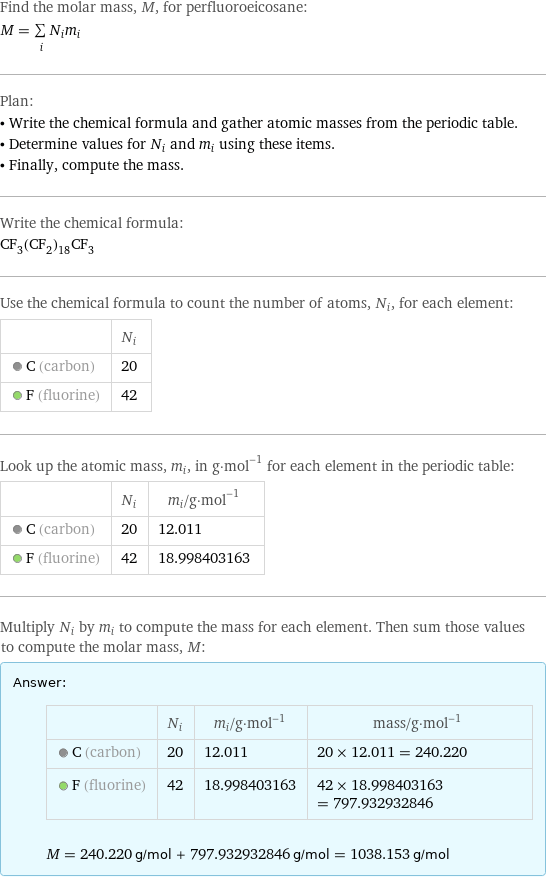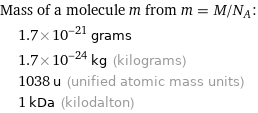Input interpretation

perfluoroeicosane | molar mass
Result

Find the molar mass, M, for perfluoroeicosane: M = sum _iN_im_i Plan: • Write the chemical formula and gather atomic masses from the periodic table. • Determine values for N_i and m_i using these items. • Finally, compute the mass. Write the chemical formula: CF_3(CF_2)_18CF_3 Use the chemical formula to count the number of atoms, N_i, for each element: | N_i C (carbon) | 20 F (fluorine) | 42 Look up the atomic mass, m_i, in g·mol^(-1) for each element in the periodic table: | N_i | m_i/g·mol^(-1) C (carbon) | 20 | 12.011 F (fluorine) | 42 | 18.998403163 Multiply N_i by m_i to compute the mass for each element. Then sum those values to compute the molar mass, M: Answer: | | | N_i | m_i/g·mol^(-1) | mass/g·mol^(-1) C (carbon) | 20 | 12.011 | 20 × 12.011 = 240.220 F (fluorine) | 42 | 18.998403163 | 42 × 18.998403163 = 797.932932846 M = 240.220 g/mol + 797.932932846 g/mol = 1038.153 g/mol
Unit conversion

1.03815 kg/mol (kilograms per mole)
Comparisons

≈ 1.4 × molar mass of fullerene ( ≈ 721 g/mol )

≈ 5.3 × molar mass of caffeine ( ≈ 194 g/mol )

≈ 18 × molar mass of sodium chloride ( ≈ 58 g/mol )
Corresponding quantities

Mass of a molecule m from m = M/N_A: | 1.7×10^-21 grams | 1.7×10^-24 kg (kilograms) | 1038 u (unified atomic mass units) | 1 kDa (kilodalton)

Relative molecular mass M_r from M_r = M_u/M: | 1038